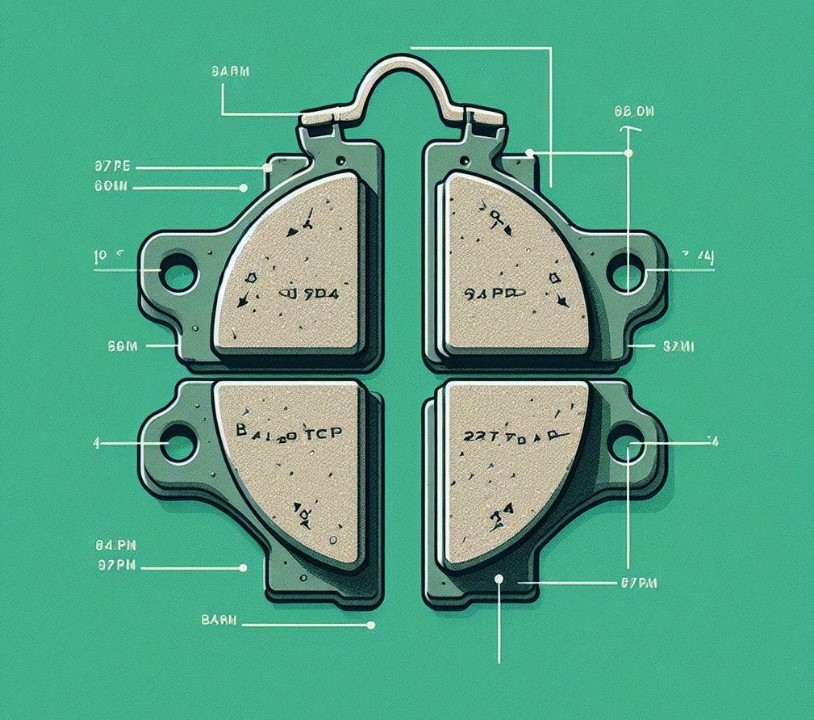Are Bike Brake Pads Universal? Answered
This article will explain Are Bike Brake Pads Universal? The short answer is no. Bike brake pads come in various shapes, sizes, and compounds, designed to match different types of braking systems and riding conditions. Let’s delve deeper into why this diversity exists and how to select the right brake pads for your bike. When it comes to maintaining your bicycle, understanding the compatibility of bike brake pads is crucial for ensuring optimal performance and safety.
Key Takeaways
- Bike brake pads are not universal; compatibility depends on the brake system and riding conditions.
- Various types of brake pads include rim brake pads and disc brake pads, each with subtypes designed for specific needs.
- It’s essential to match the brake pad type to your bike’s braking system and your riding style for optimal performance and safety.
Are Bike Brake Pads Universal?
No, bike brake pads are not universal. Each type of brake system on bikes, like rim brakes or disc brakes, requires specific brake pads. The size, shape, and material of the brake pads must match the bike’s braking system to work correctly. This ensures the bike stops safely and effectively when you press the brakes.

Understanding Brake Pad Types
Brake pads play a pivotal role in your bike’s braking system, directly impacting your ride’s safety and performance. There are two main categories: rim brake pads and disc brake pads, each suitable for different types of brakes and bicycles.
Rim Brake Pads
Rim brake pads are designed for bikes with rim brake systems. These pads press against the wheel’s rim to slow down the bike. Within this category, there are variations such as cartridge pads (which allow for easy pad replacement) and traditional pads (where the pad and holder are a single unit). The material composition and shape of rim brake pads vary to match specific riding conditions and rim materials.
Disc Brake Pads
Disc brake pads are used in bicycles equipped with disc brakes. These pads clamp onto a rotor mounted to the wheel hub. Disc brake pads come in various compounds, including organic (resin), metallic (sintered), and semi-metallic. Organic pads offer quieter operation and better initial bite, while metallic pads provide longer life and better performance in wet and muddy conditions.
Selecting the Right Brake Pads
Choosing the right brake pads for your bicycle is essential for achieving the best performance and safety. The selection process involves considering the type of brake system your bike has, your riding style, and the conditions you typically ride in.
Compatibility with Brake Systems
The first step in selecting brake pads is to identify the type of brake system your bike uses. Rim brake systems require rim brake pads, while disc brake systems use disc brake pads. Using incompatible brake pads can result in poor braking performance and potential damage to your bike.
Riding Style and Conditions
Your riding style and the typical conditions you ride in significantly influence the type of brake pads that will best suit your needs. For example, if you frequently ride in wet and muddy conditions, metallic or semi-metallic disc brake pads may offer better performance and durability than organic pads.
Materials and Performance
Brake pads are made from various materials, each offering distinct advantages in terms of performance, durability, and noise reduction. Understanding the differences between these materials can help you make an informed decision that aligns with your riding needs.
Organic Brake Pads
Organic brake pads, made from a blend of fibers and resin, provide quiet operation and good stopping power under normal conditions. They are ideal for casual riding and offer smooth braking feel.
Metallic Brake Pads
Metallic brake pads are known for their durability and excellent performance in wet and harsh conditions. These pads are suited for aggressive riding styles and mountain biking, where they excel in heat dissipation and longevity.
Effect of Weather on Brake Pad Performance
The impact of weather on brake pad performance cannot be understated. Different materials react uniquely to conditions such as rain, humidity, and temperature extremes.
For instance, organic pads might perform well in dry conditions but can falter in wet weather, leading to longer stopping distances. Metallic pads, however, excel in adverse weather conditions, maintaining their performance due to their superior heat resistance and water shedding capabilities.

Adjusting for Weather Conditions
Riders should consider their local climate and weather patterns when selecting brake pads. If you’re located in a region with frequent rain and wet conditions, metallic or semi-metallic brake pads may be the best choice.
Conversely, in dry, arid areas, the quieter and smoother operation of organic pads could be more beneficial, providing ample stopping power without the noise and wear associated with harder compounds.
Maintenance and Replacement Intervals
Regular maintenance and timely replacement of brake pads are crucial for safe cycling. All brake pads have a wear indicator, either in the form of a physical mark or measurement, which signifies when it’s time for them to be replaced. Ignoring these indicators can lead to reduced braking efficiency or, worse, damage to the brake system itself.
Recognizing Wear Patterns
Understanding wear patterns is essential for maintaining optimal brake performance. Uneven wear, for instance, can indicate issues with the brake caliper alignment or the need for rotor inspection. Regular checks help ensure that brake pads wear evenly and perform as expected, safeguarding against unexpected braking issues during rides.
Alternative Braking Systems and Their Pads
While rim and disc brakes dominate most bicycles, alternative systems like drum brakes or hydraulic rim brakes exist, each requiring specific pads or maintenance approaches.
Drum brakes, integrated into the hub, are low maintenance and less affected by weather conditions but offer less stopping power. Hydraulic rim brakes provide excellent stopping power and modulation but require hydraulic-specific pads and more complex maintenance.
Choosing Between Braking Systems
The choice between braking systems extends beyond personal preference, impacting the selection of brake pads. Disc brakes, for instance, offer superior performance in diverse conditions and are increasingly becoming the standard for new bicycles.
However, for those with vintage or specific performance bicycles, maintaining the original braking system might be preferable, necessitating a deeper understanding of available pad options and their maintenance.
Conclusion
In summary, bike brake pads are not universal; their selection requires careful consideration of the brake system, material, riding conditions, and personal preferences.
By understanding the nuances of different brake pad types and maintaining them properly, cyclists can ensure optimal performance and safety on their rides. Whether you’re navigating city streets or tackling rugged trails, the right brake pads make all the difference in your riding experience.
Top FAQ’s
Can I use any disc brake pad with my bike’s disc brake system?
No, disc brake pads must be compatible with your specific brake caliper model. Using incorrect pads can lead to poor braking performance or damage to the brake system.
How often should I replace my bike’s brake pads?
Replace brake pads once they reach the wear indicator or if you notice a significant drop in performance. This varies based on your riding frequency, conditions, and brake pad material.
Are expensive brake pads worth the extra cost?
Higher-priced brake pads often offer better performance, durability, or specific features like reduced noise or better modulation. Whether they’re worth it depends on your riding needs and preferences.
Can changing brake pads improve my bike’s braking performance?
Yes, upgrading to higher-quality brake pads can improve braking performance, especially in terms of stopping power, durability, and heat management.
Is it difficult to replace bike brake pads myself?
Replacing bike brake pads is generally straightforward and can be done at home with basic tools. However, the exact process varies by brake type and model, so consulting the manufacturer’s guide is recommended.

Welcome to the exhilarating world of Matt Rex, a professional car racer turned renowned vehicle enthusiast. Immerse yourself in his captivating blog as he shares heart-pounding adventures, expert reviews, and valuable insights on cars, trucks, jets, and more. Fuel your passion for speed and discover the beauty of vehicles through Matt’s engaging stories and meticulous expertise. Join the ever-growing community of enthusiasts who find inspiration and expert advice in Matt Rex’s blog—a digital hub where the thrill of speed meets the pursuit of knowledge.







